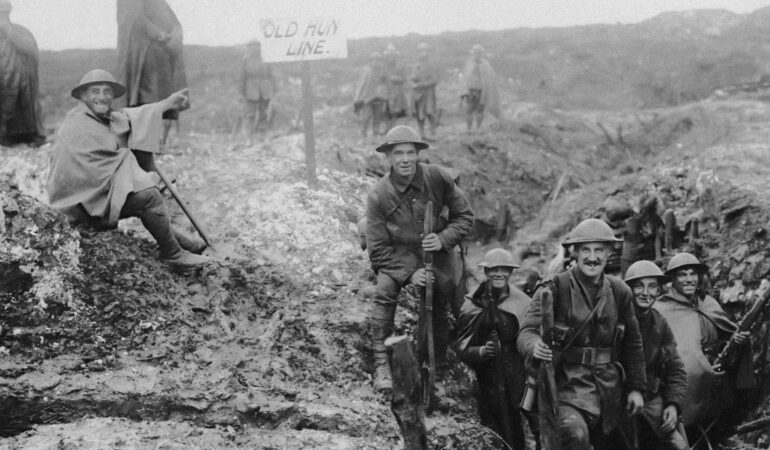The Impact of Photojournalism During World War One: A Visual Journey

World War One, also known as the Great War, was a global conflict that took place between 1914 and 1918. It involved many nations and caused immense devastation, with millions of lives lost. The war marked a turning point in history, and its significance cannot be understated. Amidst the chaos and destruction, photojournalism emerged as a medium that would forever change how wars were understood and remembered.
Historical Background of World War One
To comprehend the impact of photojournalism during World War One, it is essential to grasp the historical background of the conflict. The war was triggered by a complex web of political alliances and tensions that existed among European powers at the time. The assassination of Archduke Franz Ferdinand of Austria-Hungary in 1914 acted as the catalyst, leading to a series of declarations of war and the escalation of the conflict.
Emergence of Photojournalism
During the early 20th century, photography was undergoing rapid advancements. The development of smaller, more portable cameras made it easier for photographers to capture moments in real-time. This technological progress coincided with the outbreak of World War One, and photojournalists seized the opportunity to document the war from the front lines. These photographers, armed with their cameras, ventured into the heart of the conflict to provide the world with a visual account of the war’s reality.
From Trenches to Thrills: The Legacy of World War One and the Advent of Modern Live Casinos
The First World War, also known as the Great War, was a global conflict that shook the world from 1914 to 1918. It was a time of unimaginable devastation and sacrifice as nations clashed on an unprecedented scale. The war marked a turning point in history, shaping the geopolitical landscape and altering the course of the 20th century. Fast forward to the present day, and we find ourselves in a vastly different world, one where technology and entertainment have taken center stage. In this modern era, live casinos have emerged as thrilling destinations for those seeking excitement and entertainment. With the ease of online access, live casinos like Aviator Betting (https://aviatorbetting.com/) bring the exhilaration of casino games right to your fingertips, allowing you to experience the rush of gambling in real-time from the comfort of your own home. It’s fascinating to observe how the legacy of World War One has intertwined with the advancements of the digital age, creating new avenues for excitement and leisure.
Impact of Photojournalism on Public Perception
The power of photojournalism during World War One lay in its ability to vividly portray the horrors of war. Images of trenches, battlefields, and wounded soldiers shocked the public and revealed the true face of warfare. Unlike previous wars, the visual documentation offered by photojournalists brought the front lines directly into people’s homes, creating a stronger emotional connection and stirring public opinion. The shocking images captured by photojournalists often served as a call to action, mobilizing support for the war effort or, in some cases, fueling anti-war sentiment.
Role of Photojournalists
Photojournalists faced immense challenges and risks while capturing images during World War One. They had to navigate dangerous and unpredictable environments, often putting their lives on the line to document the conflict. Despite these challenges, many photographers managed to capture iconic images that continue to shape our understanding of the war. Notable names such as Robert Capa, Frank Hurley, and Ernst Friedrich captured powerful and haunting images that transcended mere documentation and conveyed the human stories behind the war.
Propaganda and Censorship
War photography was not immune to manipulation for political purposes. Governments and military authorities often censored or controlled the release of images to shape public opinion. War propaganda utilized photography as a tool to influence public sentiment, portraying the enemy as brutal and the home front as virtuous. The manipulation of images to serve political agendas raised ethical questions about the authenticity and objectivity of war photography.
Photography Techniques and Innovations
Photojournalists during World War One employed various techniques and innovations to capture compelling images. Advances in camera technology allowed for faster exposure times and sharper images, enabling photographers to freeze motion and capture the intensity of battle. The use of panoramic cameras and telephoto lenses offered new perspectives and enhanced the visual impact of war photography.
Psychological and Emotional Impact
The visual documentation of World War One had a profound psychological and emotional impact on viewers. The graphic and harrowing images conveyed the brutal reality of war, leaving a lasting impression on those who witnessed them. These images evoked strong emotions, prompting individuals to reflect on the human cost of war and the need for peace. However, the psychological toll on the photographers themselves should not be overlooked. Witnessing and documenting the horrors of war took a heavy toll on their mental well-being.
Legacy of World War One Photojournalism
The impact of photojournalism during World War One extended far beyond the immediate conflict. The power of visual storytelling, as demonstrated by the war’s photographs, influenced subsequent conflicts and journalism practices. The practice of embedding journalists with military units during conflicts can be traced back to the lessons learned from World War One. The images captured during the war continue to serve as a reminder of the devastating consequences of war and the importance of responsible journalism.
Conclusion
In conclusion, photojournalism had a profound impact on public perception and understanding of World War One. The images captured by brave photographers on the front lines exposed the grim reality of war, prompting emotional responses and shaping public opinion. Despite the challenges and risks faced by photojournalists, their work left an indelible mark on history and influenced the future of the profession. The legacy of World War One photojournalism serves as a reminder of the power of visual storytelling in documenting and preserving the human experience in times of conflict.
Leave A Comment
You must be <a href="https://www.worldwaronecolorphotos.com/wp-login.php?redirect_to=https%3A%2F%2Fwww.worldwaronecolorphotos.com%2Fthe-impact-of-photojournalism-during-world-war-one%2F">logged in</a> to post a comment.